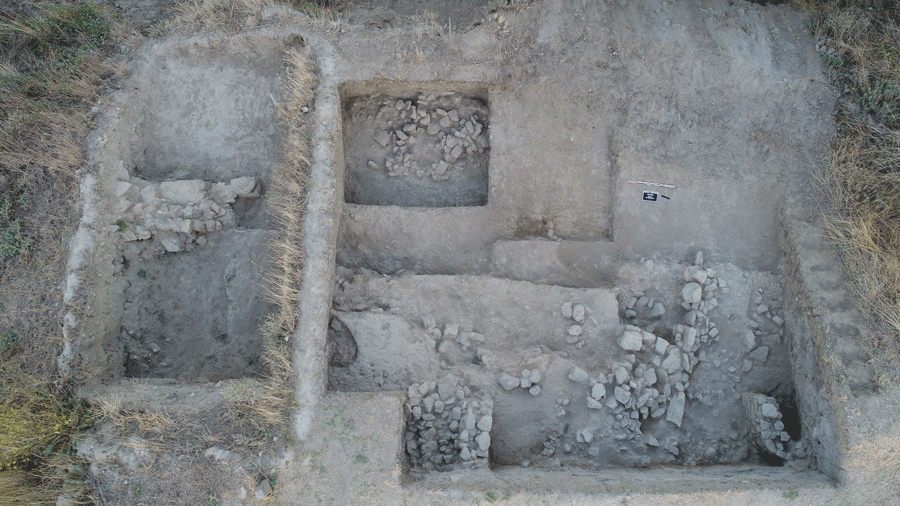
Excavations in the Eceabat district in the northwestern province of Çanakkale have revealed that people from the Balkans settled in the area 4,000 years ago.
Archaeologists have found 3,500-year-old artifacts decorated with Balkan motifs in the Maydos Church Hill Mound site, where they have been digging for 10 years. Mostly housewares, the finds included ceramics, spindle whorls, weaving looms, hand axes and a piece of a plate, said Göksel Sazcı, head of excavations and archaeology professor at Çanakkale Onsekiz Mart University.
“This is perhaps the gateway of Anatolia to Europe,” Sazcı, said, “the point where the people of Europe and the Anatolian people met was Maydos. It is important in this respect.”
This year’s excavations also helped to uncover an ancient defense system that was discovered last year. Archaeologists found a defense wall from the Early Bronze Age that was built at an incline by making zigzags. They also found two other defense walls.
“We have progressed a lot, but it wasn’t possible for us to [uncover the entire defense system]. We will unearth it in the next season,” Sazcı said.
In the center part of the mound, archaeologists found artifacts and structures related to local production.
In the western part of the mound, “we can say that local people from the Balkans, Bulgaria and Romania, as well as the merchants, resided there,” Sazcı said. “Maybe they set up an agency there. It is possible to say that local people resided in the central and the more prestigious eastern part of the mound.”
An interesting find this year was the uncovering of a human-faced vessel piece, the professor said.
“Normally, the human-faced vessel fragments are known from the Troas region (an ancient Greek city on the Aegean Sea near the northern tip of Turkey’s western coast) in the Early Bronze Age, but this vessel emerged from the Late Bronze Age. There is a difference of about 1,000 years. We found an idol in previous years. Containers with human faces, idols are part of the belief of that period,” he said.
In other words, he added, “the belief of this period continued unchanged in the region for 1,000 years.”